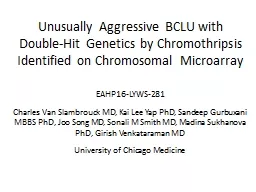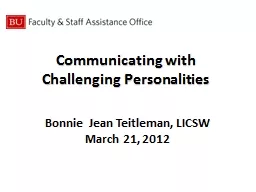PPT-U nusually Aggressive BCLU
Author : eurolsin | Published Date : 2020-08-04
with DoubleHit Genetics by Chromothripsis Identified on Chromosomal Microarray EAHP16LYWS281 Charles Van Slambrouck MD Kai Lee Yap PhD Sandeep Gurbuxani MBBS
Presentation Embed Code
Download Presentation
Download Presentation The PPT/PDF document "U nusually Aggressive BCLU" is the property of its rightful owner. Permission is granted to download and print the materials on this website for personal, non-commercial use only, and to display it on your personal computer provided you do not modify the materials and that you retain all copyright notices contained in the materials. By downloading content from our website, you accept the terms of this agreement.
U nusually Aggressive BCLU: Transcript
Download Rules Of Document
"U nusually Aggressive BCLU"The content belongs to its owner. You may download and print it for personal use, without modification, and keep all copyright notices. By downloading, you agree to these terms.
Related Documents














